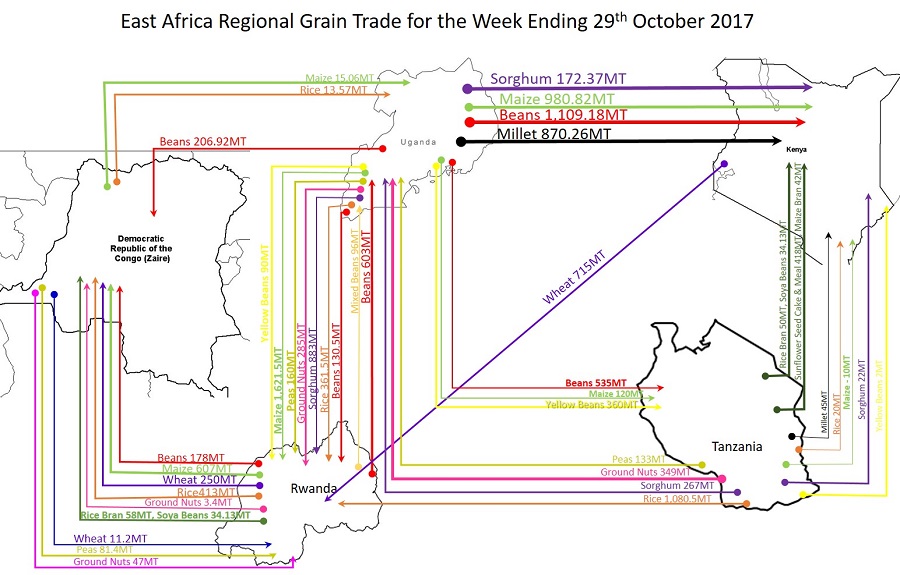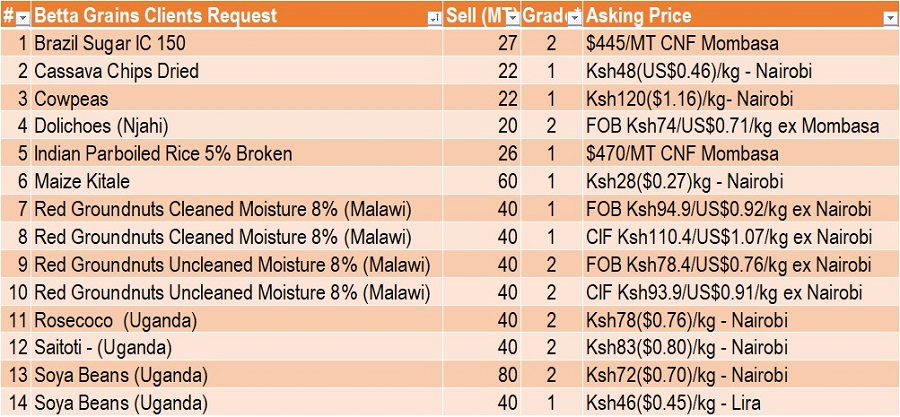Figure 1 East Africa Regional Grain Trade Flow for the Week Ending 29th October 2017
The Week’s Market Analysis
- An unusual pattern was Tanzania did not export any rice to Uganda during the week, however there was unusually high volume (1,080.5MT) of rice export from Tanzania to Rwanda.
- Another unusual pattern was Rwanda exported Rice Bran (58MT) to DRC.
The Week’s Market Prices for Select Markets
Table 1- Market Prices for Select Markets in the East Africa Region for the Week Ending 29th October 2017
- The price of mixed beans was highest in Kenya, Makueni, Ksh85($0.84)/kg this is because the region had poor rainfall last season. October being the beginning of the area’s planting season, the price of the previous harvest beans increased as most farmers were shopping for seeds.
- Masindi Uganda had the highest price of cowpeas Ksh135($1.30)/kg, while Soroti had low prices Ksh42($0.41)/kg. The prices in Kenya were generally high unfortunately most Kenya traders were unwilling to sell cowpeas for more than Ksh111($1.07)/kg, because most consumers are used to paying about Ksh58($0.56)/kg. Cowpeas tend to get weevil infestation much faster than beans, therefore most traders do not like holding on to cowpeas longer than necessary. There were no reported cross border trade for cowpeas during the week.
The Week’s Market Opportunities
Betta Grains continues to receive various request to buy and sell grains and cereal. Kindly visit our eDuka page https://www.bettagrains.com/?page_id=1236 for a more up to date list.
Author; Fostina Mani, Betta Grains. Fostina.Mani@bettagrains.com, Twitter: @FostinaMani.
Acknowledgment: The data used for the analysis has been obtained from; IAM, Government of Kenya, Ministry of Agriculture, Livestock & Fisheries, Government of Tanzania, Ministry of Trade and Industry, EAGC, RATIN, Farm Gain Uganda, FEWS NET, & Betta Grains.
Disclaimer. Due to unavailable of data on various border points on formal cross-border trade flows and volumes in the public arena. The volumes indicated above are mostly from the informal cross-border data that is available to the public. The purpose of the analysis, is simply to provide an indication of the East Africa Regional Trade flow to SMEs, Smallholder Farmers, and Other Stakeholders in a manner and language that is applicable, simple, and makes sense. Those desiring to obtain actual trade volumes are advised to contact various internationally funded government projects that have been mandated to provide the regional trade data for public good.



